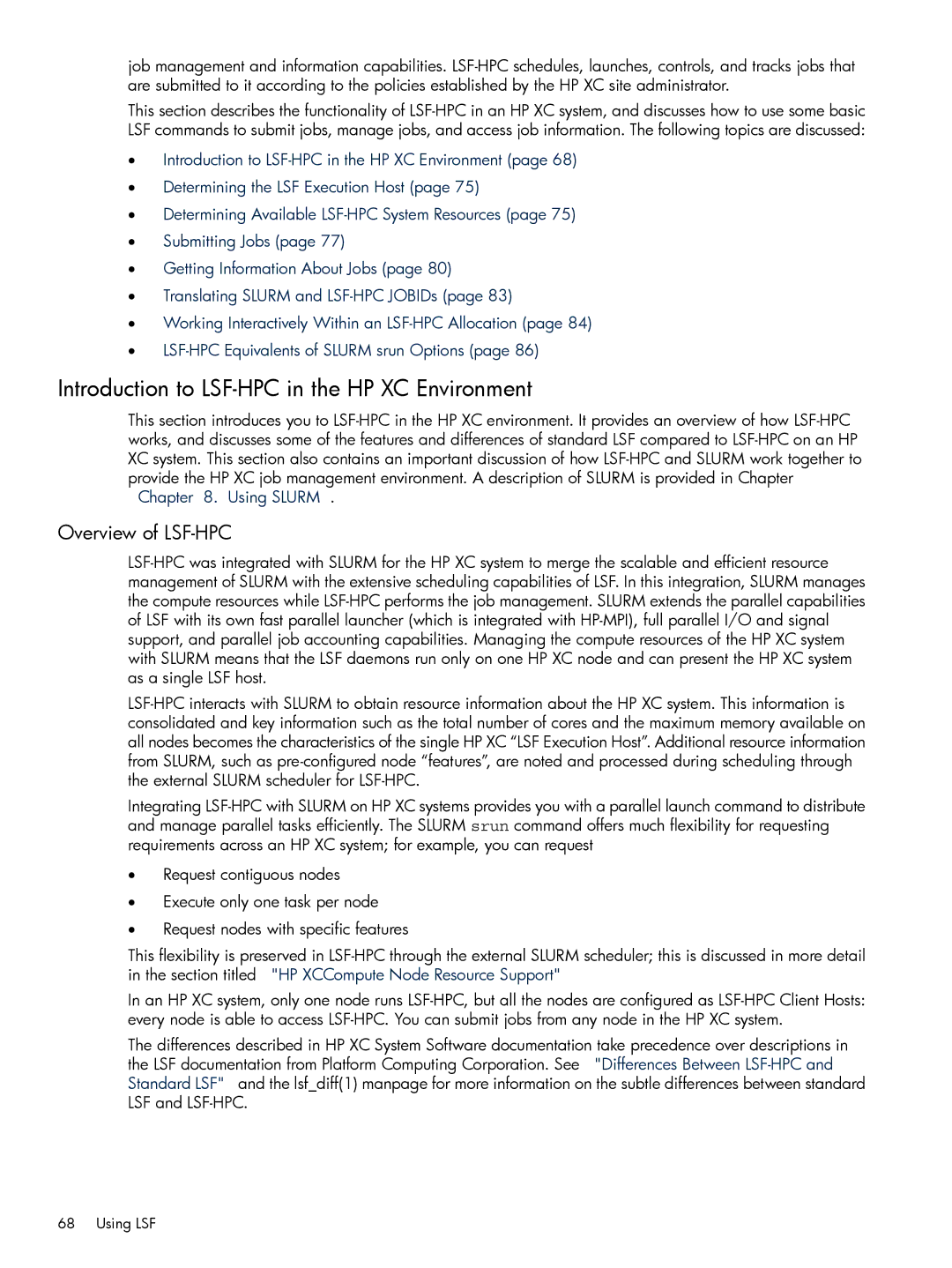job management and information capabilities.
This section describes the functionality of
•Introduction to
•Determining the LSF Execution Host (page 75)
•Determining Available
•Submitting Jobs (page 77)
•Getting Information About Jobs (page 80)
•Translating SLURM and
•Working Interactively Within an
•
Introduction to LSF-HPC in the HP XC Environment
This section introduces you to
Chapter 8. Using SLURM .
Overview of LSF-HPC
Integrating
•Request contiguous nodes
•Execute only one task per node
•Request nodes with specific features
This flexibility is preserved in
In an HP XC system, only one node runs
The differences described in HP XC System Software documentation take precedence over descriptions in the LSF documentation from Platform Computing Corporation. See "Differences Between
68 Using LSF
